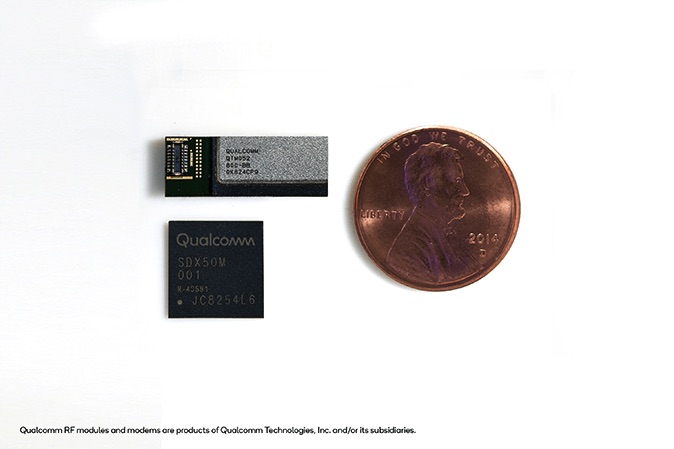
After years of network upgrades, it looks like the final pieces of 5G technology are finally coming together. Qualcomm has just announced the release of its first “first fully-integrated 5G NR mmWave and sub-6 GHz RF modules for smartphones and other mobile devices.”
Qualcomm actually announced two antenna modules. The first is called the QTM052 mmWave antenna module and was engineered to “open up spectrum and improve mmWave signal using 5G technologies.” Since the mmWave signals don’t travel very far and are easily blocked by objects as small as your hand, Qualcomm created this antenna array to overcome those challenges. It uses something it calls “beam forming, beam steering, and beam tracking for bi-directional mobile mmWave,” allowing it to improve overall range and coverage. The module is also a series of antennas to be placed in the handset so the beams can move whenever there’s signal blockage.
The second antenna, called the QPM56xx sub-6 GHz RF module, works on lower 3.3-4.2 GHz, 3.3-3.8GHz, or 4.4-5.0 GHz bands. This sub-6 antenna will provide more consistent 5G coverage in fixed locations
These antennas will be used alongside the Snapdragon X50 5G modem that was released in 2016. The two antenna modules will be used in tandem to deliver 5G speeds in a variety of settings.
Several of the world’s largest handset manufacturers, including Xiaomi, Sony, HTC, Samsung, and LG, have already confirmed that they will work with Qualcomm in the coming months to create mobile devices that are compatible with 5G. These devices should be released during the first half of the year with many likely making their debut at Mobile World Congress next February.
Huawei has also announced it is planning a 5G phone for late 2019. Earlier this year the Chinese tech giant announced its Balong 5G01 modem. The modem is schedule for the third quarter of 2019, meaning we should see its 5G handset soon thereafter.
And while we’re still many months away from seeing 5G handsets, most of the major networks are quickly building out their 5G networks to prepare for the launch. AT&T and Verizon have each indicated they plan to release 5G hot spots (also known as pucks) later this year in selected markets so users can get a taste of 5G.


